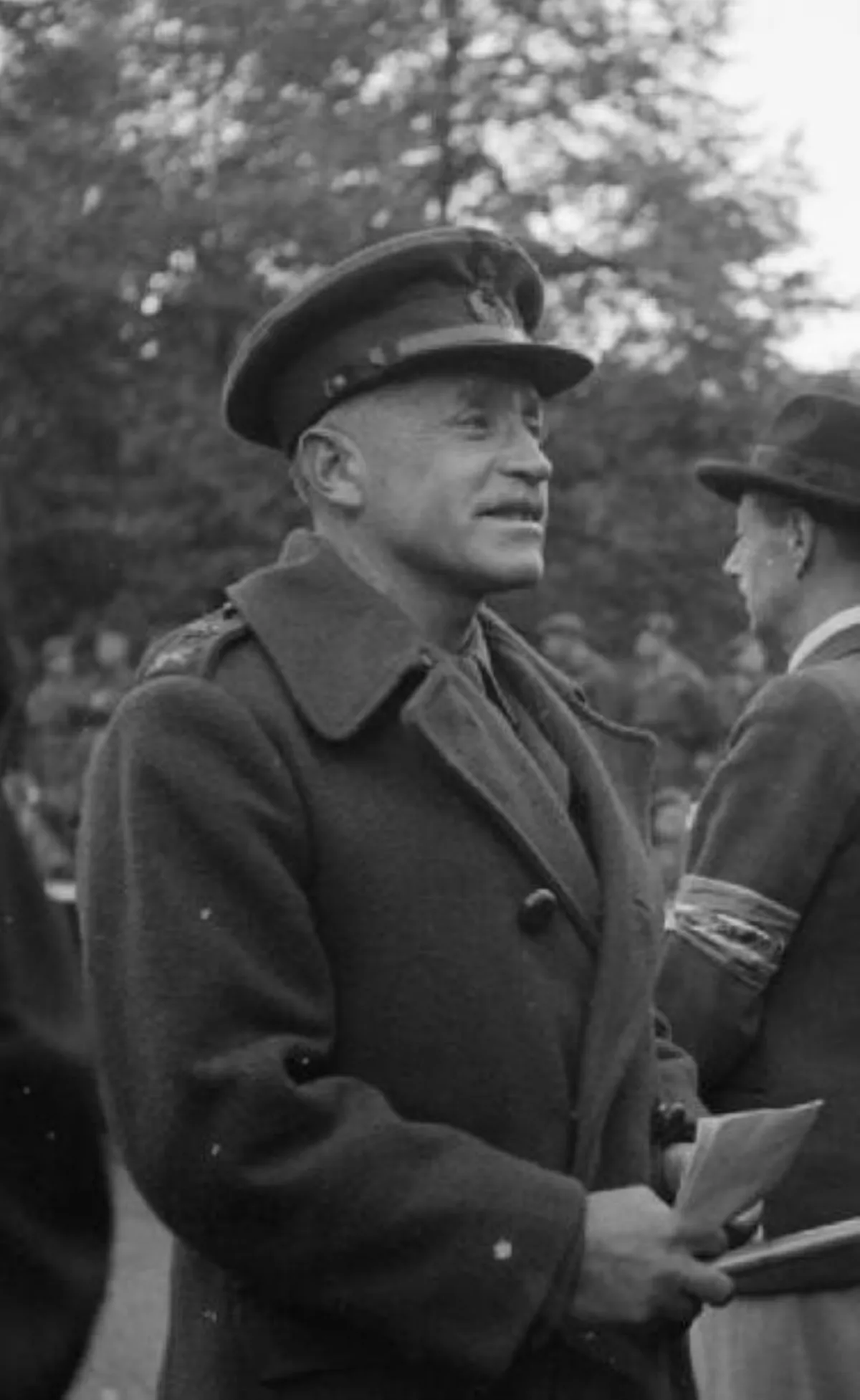 1.
1. Richard O'Connor eventually escaped after the fall of Mussolini in the autumn of 1943.

 1.
1. Richard O'Connor eventually escaped after the fall of Mussolini in the autumn of 1943.
In honour of his war service, Richard O'Connor was recognised with the highest level of knighthood in two different orders of chivalry.
Richard O'Connor was awarded the Distinguished Service Order, the Military Cross, the French Croix de Guerre and the Legion of Honour, and served as aide-de-camp to King George VI.
Richard O'Connor was mentioned in despatches nine times for actions in the First World War, once in Palestine in 1939 and three times in the Second World War.
Richard Nugent O'Connor was born in Srinagar, Kashmir, India, on 21 August 1889.
Richard O'Connor's father, Maurice O'Connor, was a major in the Royal Irish Fusiliers, and his mother, Lilian Morris, was the daughter of a former governor of India's central provinces.
Richard O'Connor attended Tonbridge Castle School in 1899 and The Towers School in Crowthorne in 1902.
The battalion was initially stationed in Aldershot when Richard O'Connor joined them in October 1909 before being rotated, in January 1910, to Colchester.
Richard O'Connor was awarded the Military Cross in February 1915.
Richard O'Connor was awarded the Distinguished Service Order and appointed brevet lieutenant-colonel while he was in command of the 2nd Infantry Battalion of the Honourable Artillery Company, part of the 7th Division, in June 1917.
In late October 1918 the 2nd Battalion captured the island of Grave di Papadopoli on the Piave River for which Richard O'Connor received the Italian Silver Medal of Military Valor and a Bar to his DSO.
Richard O'Connor returned to his old unit, the Cameronians, as adjutant from February 1924 to 1925.
Richard O'Connor returned to the Staff College, Camberley as an instructor from October 1927 to January 1930.
In 1930 Richard O'Connor again served with the 1st Battalion, Cameronians in Egypt and from 1931 to 1932 in Lucknow, India.
Richard O'Connor attended the Imperial Defence College in London in 1935.
In September 1938 Richard O'Connor was promoted to major-general and appointed General Officer Commanding 7th Infantry Division in Palestine, along with the additional responsibility as Military Governor of Jerusalem.
Richard O'Connor was appointed a Companion of the Order of the Bath in July 1940.
Italy declared war on Britain and France on 10 June 1940 and, soon after, Richard O'Connor was appointed commander of the Western Desert Force.
Richard O'Connor was tasked by Lieutenant-General Henry Maitland Wilson, commander of the British troops in Egypt, to push the Italian force out of Egypt, to protect the Suez Canal and British interests from attack.
Richard O'Connor had the 7th Armoured Division and the Indian 4th Infantry Division along with two brigades.
Richard O'Connor promptly moved to pursue and cut them off, sending his armour southwest through the desert in a wide flanking movement, while the infantry gave chase along the coast to the north.
In recognition of this, Richard O'Connor was made a Knight Commander of the Order of the Bath.
Richard O'Connor was aware of this and urged Wavell to allow him to push on to Tripoli with all due haste to finish off the Italians.
XIII Corps HQ was wound down and in February 1941 Richard O'Connor was appointed General Officer Commanding-in-Chief the British Troops in Egypt.
Wavell and Richard O'Connor now faced a formidable foe under a commander whose cunning, resourcefulness, and daring would earn him the nickname "the Desert Fox".
Richard O'Connor was called forward and arrived from Cairo the next day, but declined to assume Neame's command because of his lack of familiarity with the prevailing conditions.
Richard O'Connor spent the next two and a half years as a prisoner of war, mainly at the Castello di Vincigliata near Florence, Italy.
Montgomery suggested that Richard O'Connor be his successor as British Eighth Army commander, but that post was instead given to Oliver Leese and Richard O'Connor was given a corps to command.
On 21 January 1944 Richard O'Connor became commander of VIII Corps, which consisted of the Guards Armoured Division, 11th Armoured Division, 15th Infantry Division, along with 6th Guards Tank Brigade, 8th Army Group Royal Artillery and 2nd Household Cavalry Regiment.
Richard O'Connor tried to re-establish a bridgehead during Operation Jupiter with the 43rd Division, but met with little success.
Richard O'Connor was succeeded as GOC VIII Corps by Major-General Evelyn Barker, a much younger man and formerly the GOC of the 49th Infantry Division who had been one of O'Connor's students at the Staff College at Camberley in the late 1920s.
Richard O'Connor was mentioned in despatches for the thirteenth and final time of his career on 22 March 1945.
Richard O'Connor was Commandant of the Army Cadet Force in Scotland from 1948 to 1959; Colonel of the Cameronians, 1951 to 1954; Lord lieutenant of Ross and Cromarty from 1955 to 1964 and served as Lord High Commissioner to the General Assembly of the Church of Scotland in 1964.
Richard O'Connor died in London on 17 June 1981, just two months shy of his 92nd birthday.
Dick Richard O'Connor was my ideal of a commander in battle; always approachable and ready to listen, yet firm and decisive and always fair in his judgement of people and events; modest to a degree, shunning the limelight and embarrassed by praise; calmly resolute and courageously determined.